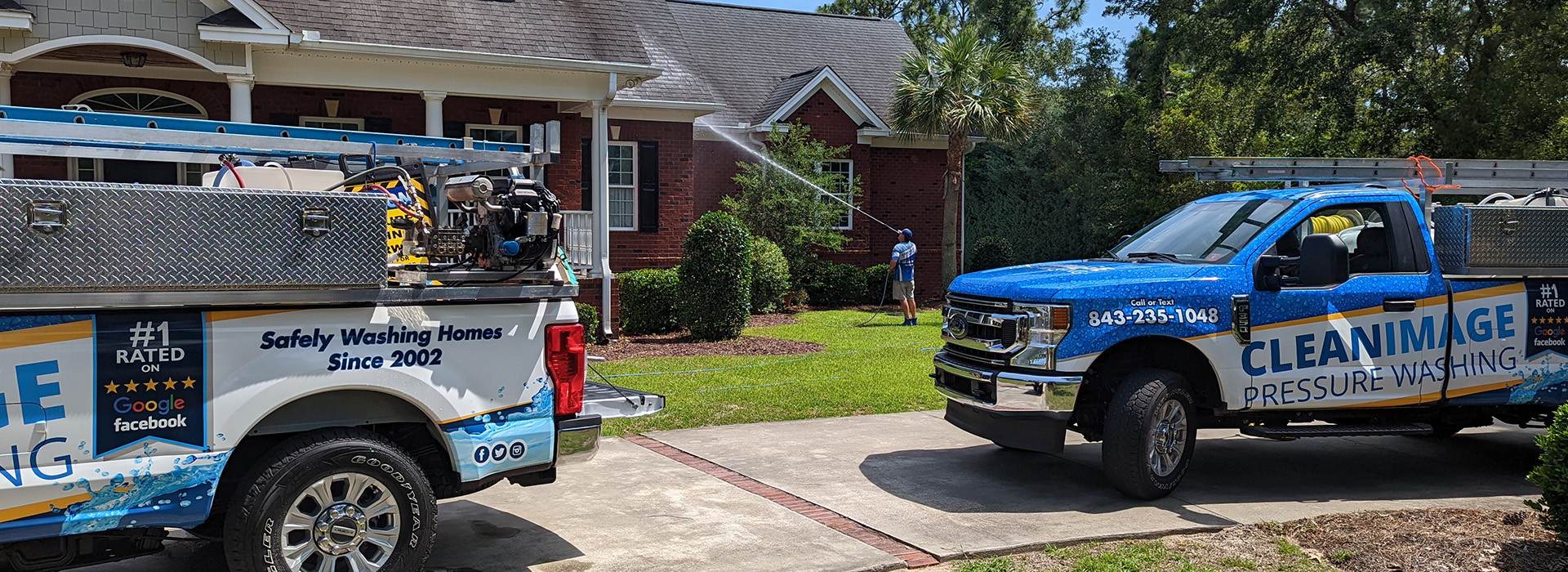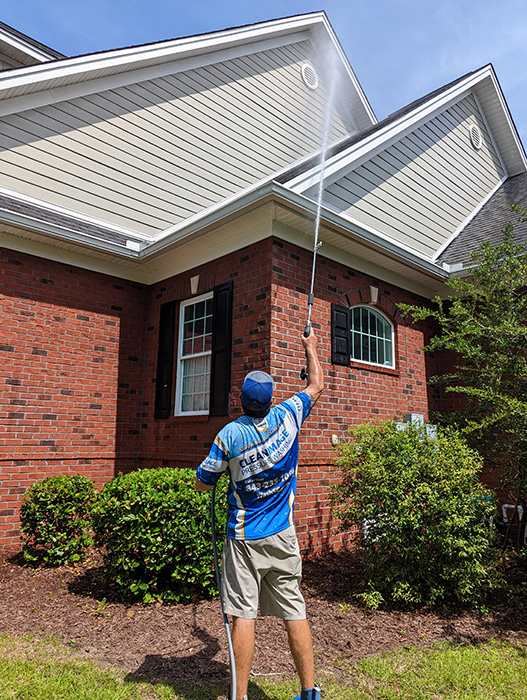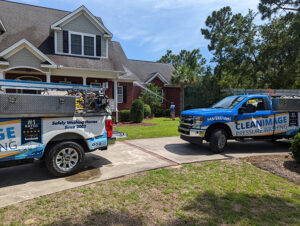How to Choose the Right Power Washing Cleaning Equipment for Your Needs
Imagine stepping out onto your front porch, only to notice the once-vibrant colors of your home’s exterior have dulled beneath layers of dirt and grime. Your driveway is speckled with stubborn oil stains, and your deck looks like it has seen better days. You’ve heard about the magic of power washing, but the sheer variety of equipment leaves you feeling overwhelmed. How do you choose the right power washing cleaning equipment that fits your unique needs without breaking the bank? This guide will illuminate your path, simplifying the selection process and ensuring you make an informed decision.
Understanding Your Cleaning Needs
Understanding your cleaning needs is the first and most crucial step in selecting the right power washing equipment. Begin by assessing the types of surfaces you intend to clean. Different materials, such as wood, concrete, brick, or vinyl siding, have varying tolerances to pressure levels and cleaning techniques. For instance, while a high PSI (pounds per square inch) power washer might be suitable for robust concrete driveways, it could cause damage to more delicate wooden decks or painted surfaces. Identifying the specific contaminants you’ll be dealing with—whether it’s mildew, algae, dirt, oil stains, or graffiti—will also help you choose a machine that can efficiently handle those challenges. This targeted approach ensures you don’t over- or under-invest in equipment that may not meet your needs.
Frequency of use is another critical factor to consider. If you plan to use the power washer for occasional light cleaning tasks around your home, a smaller, electric model might suffice. These are generally easier to maneuver and store. However, for frequent use or more demanding projects, such as preparing surfaces for painting or commercial cleaning, a more powerful gas-powered model may be necessary. These machines offer higher pressure and flow rates, making them ideal for tackling tougher jobs quickly. By understanding your specific cleaning needs—including surface types, contaminants, and usage frequency—you can make an informed decision that balances efficiency, safety, and cost-effectiveness.

Different Types of Power Washers
Choosing the right power washer starts with understanding the different types available and their respective advantages. Electric power washers are well-suited for residential use, offering a quieter and lighter option that is typically easier to maintain. They are perfect for smaller tasks like cleaning cars, outdoor furniture, or decks. Electric models are also more environmentally friendly, producing no emissions and requiring less maintenance than their gas-powered counterparts. On the other hand, gas power washers deliver higher pressure and increased mobility, making them ideal for larger, more demanding projects such as cleaning driveways, sidewalks, and house exteriors. Although they tend to be noisier and require regular engine maintenance, gas models provide the robust power needed for tough stains and larger surface areas.
Additionally, it’s important to consider whether you need a cold water or hot water power washer. Cold water units are generally sufficient for most residential cleaning tasks, effectively removing dirt and grime from various surfaces. However, for jobs involving greasy or oily stains, hot water power washers can be significantly more effective, using high temperatures to break down stubborn residues quickly. Another aspect to consider is whether you need a stationary or portable model. Stationary power washers are fixed in one spot and often used in commercial settings where frequent, heavy-duty cleaning is required. Portable models, equipped with wheels and handles, offer versatility and ease of movement, making them a popular choice for homeowners who need to clean multiple areas around their property. Understanding these distinctions helps ensure you select a power washer that meets your specific cleaning needs efficiently and effectively.
Pressure Ratings and Flow Rates
When choosing the right power washing equipment, understanding pressure ratings and flow rates is essential to ensure you select a machine that meets your cleaning needs. Pressure ratings are measured in PSI (pounds per square inch) and indicate the force with which water is expelled from the washer. Higher PSI levels mean greater cleaning power, making it easier to remove stubborn dirt, grime, and stains. For example, surfaces like concrete driveways or brick walls may require a higher PSI to effectively clean, while more delicate surfaces such as wooden decks or painted areas might need a lower PSI to avoid damage. Therefore, selecting the appropriate PSI ensures both efficient cleaning and the protection of various surfaces.
Flow rate, measured in GPM (gallons per minute), indicates the volume of water delivered by the power washer. A higher GPM means more water is used during cleaning, which can help rinse away debris more quickly and efficiently. The combination of PSI and GPM determines the overall cleaning power, often referred to as cleaning units. Balancing these two factors is crucial; a high PSI with a low GPM might not be as effective as a moderately balanced PSI and GPM. For instance, a balanced power washer with a good mix of PSI and GPM can provide powerful cleaning action for tough jobs while maintaining enough water flow to rinse surfaces thoroughly. By carefully considering both pressure ratings and flow rates, you can choose a power washer that offers optimal performance for your specific cleaning tasks, ensuring efficiency and effectiveness in maintaining your property.
Essential Features to Look For
When selecting the right power washing equipment, focusing on essential features can significantly enhance your cleaning efficiency and versatility. One crucial feature to consider is adjustable pressure settings. This allows you to tailor the water pressure to suit various surfaces, from delicate wooden decks to sturdy concrete driveways, ensuring you get the most effective clean without causing damage. Another important feature is the variety of nozzles that come with the power washer. Different nozzle types can create spray patterns ranging from a narrow, concentrated stream for tough stains to a wide fan spray for larger surface areas. This flexibility ensures that you can tackle diverse cleaning tasks with ease and precision.
Additionally, the inclusion of a detergent injection system can greatly improve the cleaning power of your equipment. Such systems allow for the seamless integration of cleaning solutions into the water stream, making it easier to tackle stubborn grime and grease. This is particularly useful for surfaces that require more than just water to achieve a thorough clean. Other convenient features to look for include long hoses and power cords, which provide greater reach and reduce the need for constant repositioning. Transport wheels and ergonomic handles are also valuable, as they enhance the maneuverability and ease of use of the power washer. By prioritizing these essential features, you can ensure that your power washing equipment is both versatile and user-friendly, ultimately achieving optimal cleaning results for a variety of tasks.
Considering Portability and Storage
When choosing the right power washing equipment, considering portability and storage is crucial to ensure convenience and usability. The weight and size of the power washer play significant roles in its maneuverability. A lighter, more compact model is easier to transport around your property, especially if you have multiple areas to clean. Look for units with sturdy wheels and ergonomic handles that facilitate smooth movement over various terrains. This is particularly important if you need to navigate steps, uneven ground, or tight spaces. Additionally, consider the length of the hose and power cord; longer lengths provide greater flexibility and reach, reducing the need to frequently move the machine as you work.
Storage is another vital factor to consider, especially if you have limited space. Compact models that can be easily disassembled or feature foldable components can save valuable storage space when the equipment is not in use. Some power washers come with onboard storage options for accessories like nozzles and hoses, keeping everything organized and readily accessible. Ensuring your power washer fits neatly into your available storage area will protect the equipment from potential damage and prolong its lifespan. By prioritizing both portability and storage, you can select a power washer that not only meets your cleaning needs but also integrates seamlessly into your home environment, enhancing overall user experience and efficiency.

Budget and Warranty Considerations
When selecting the right power washing equipment, budget and warranty considerations are fundamental to making a well-informed decision. Establishing a realistic budget helps you balance between cost and quality, ensuring you invest in a machine that meets your needs without overextending your finances. Consider what features are essential for your cleaning tasks and prioritize those within your budget range. While it might be tempting to go for the least expensive option, remember that cheaper models may lack durability or important features, potentially leading to higher costs in the long run due to repairs or replacements. Investing in a mid-range or higher-end model with robust build quality and necessary features can offer better value and reliability over time.
Equally important is understanding the warranty coverage provided by the manufacturer. A comprehensive warranty can offer peace of mind, protecting your investment against defects and malfunctions. Pay attention to the duration of the warranty and what it specifically covers—whether it’s limited to certain parts or includes full coverage of the unit. Some warranties also offer customer support for troubleshooting and repairs, which can be invaluable if issues arise. Additionally, checking whether the manufacturer has a reputation for honoring their warranties and providing good customer service can save you from future hassles. By carefully considering both your budget and the warranty terms, you ensure that your chosen power washing equipment delivers not only on performance but also on long-term dependability and support.
Conclusion
Choosing the right power washing equipment doesn’t have to be a daunting task. By understanding your specific cleaning needs and considering factors like pressure ratings, essential features, portability, and budget, you can confidently select a machine that will keep your home looking its best. With the right equipment, those stubborn stains and grime will soon be a distant memory, leaving your surfaces gleaming and your property’s beauty restored. Happy cleaning!
https://www.google.com/maps?cid=11141334835103329286




